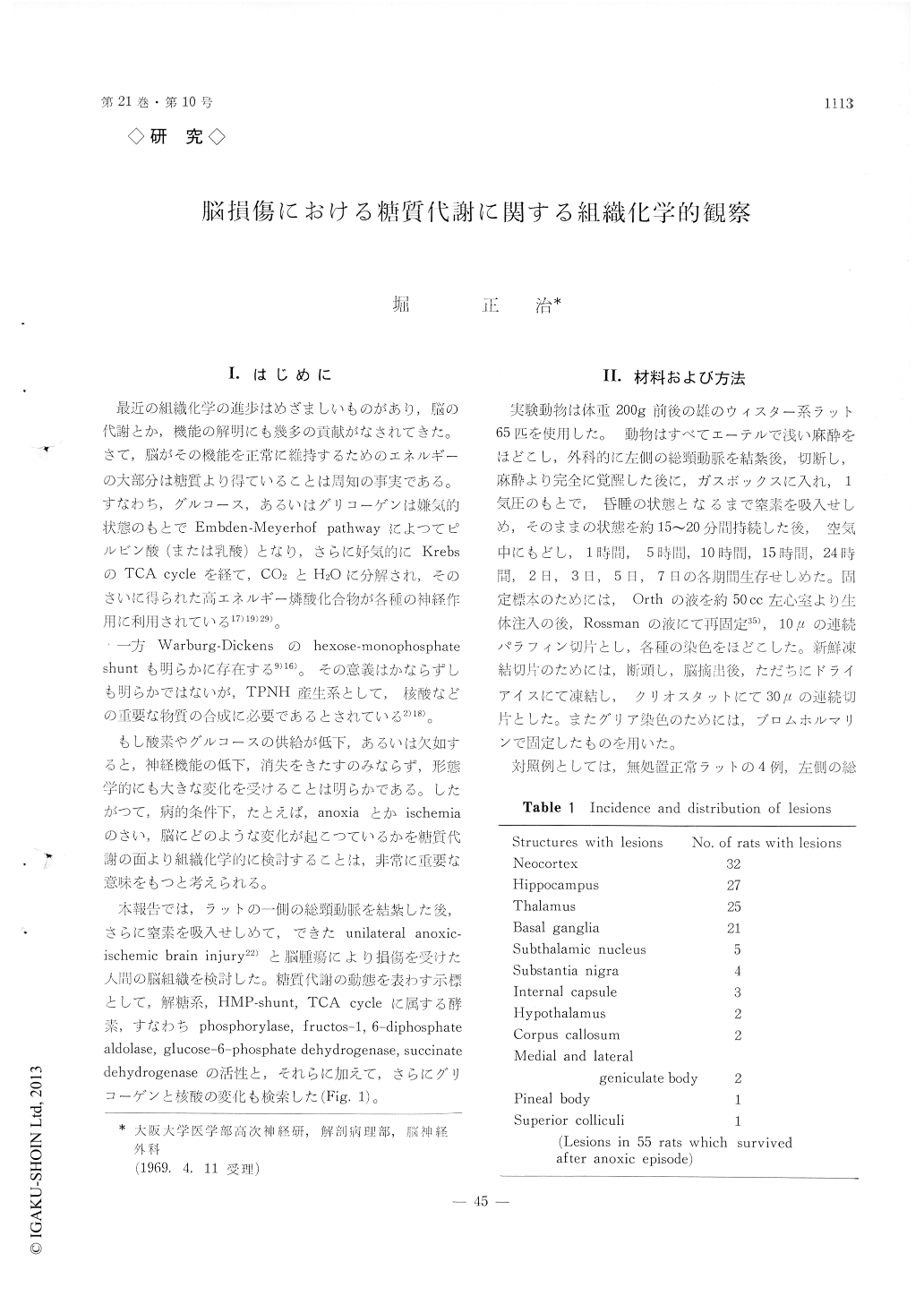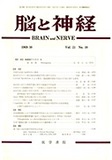Japanese
English
- 有料閲覧
- Abstract 文献概要
- 1ページ目 Look Inside
I.はじめに
最近の組織化学の進歩はめざましいものがあり,脳の代謝とか,機能の解明にも幾多の貢献がなされてきた。さて,脳がその機能を正常に維持するためのエネルギーの大部分は糖質より得ていることは周知の事実である。すなわち,グルコース,あるいはグリコーゲンは嫌気的状態のもとでEmbden-Meyerhof pathwayによつてピルビン酸(または乳酸)となり,さらに好気的にKrebsのTCA cycleを経て,CO2とH2Oに分解され,そのさいに得られた高エネルギー燐酸化合物が各種の神経作用に利用されている17)19)29)。
一方Warburg-Dickensのhexose-monophosphateshuntも明らかに存在する9)16)。その意義はかならずしも明らかではないが,TPNH産生系として,核酸などの重要な物質の合成に必要であるとされている2)18)。
Histochemical observations were made for gly-cogen, nucleic acid and several enzymes related to carbohydrate metabolism in unilateral anoxic-ische-mic brain injury of rat, produced as described by Levine, S. and in human peritumoral brain injury.
Generally the severe neuronal lesions showed re-duction or loss of glycogen, nucleic acid and every enzyme activity, but within a certain threshold of damage intensity abnormal deposition of glycogen granules was demonstrated in glial cells (predomi-nantly reactive astrocytes). These glial cells showed marked increase in phosphorylase and glucose-6-phosphate dehydrogenase activities with plenty of nucleic acid.
Under the same condition glycogen accumulation was never seen in neurons, in spite of the increase in phosphorylase and glucose-6-phosphate dehydro-genase activities and the increase staining with gal-locyanin.
Fructose-1, 6-diphosphate aldoase and succinate dehydrogenase were characterized generally by re-duction in their activities in lesions.
From the present results it is suggested that the characteristic change of glucose-6-phosphate de-hydrogenase activity can be used as one of the in-dexes for vulnerability of neurons by anoxia or ischemia and that the hexose-monophosphate shunt in carbohydrate metabolism plays the most impor-tant part in resistance against and repair from pathological conditions.

Copyright © 1969, Igaku-Shoin Ltd. All rights reserved.


